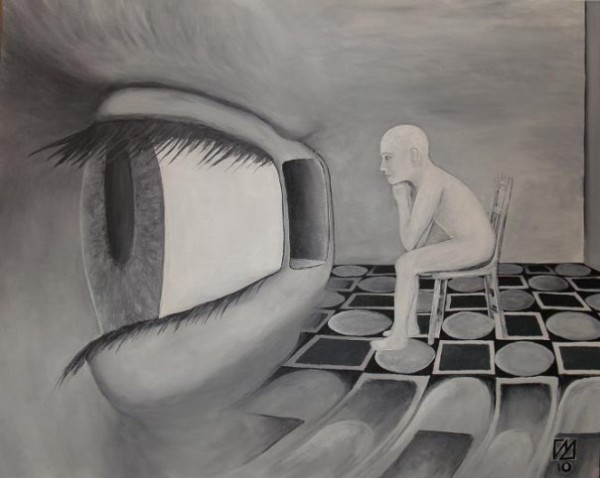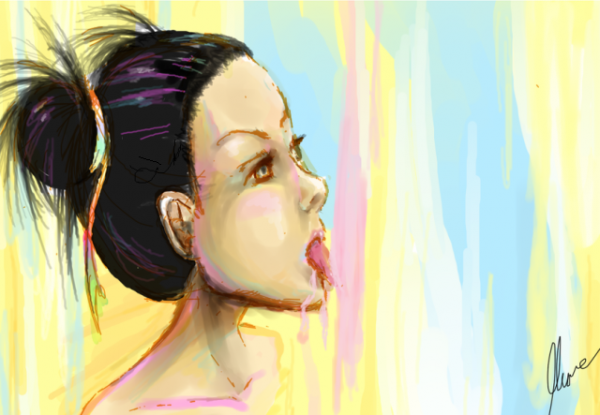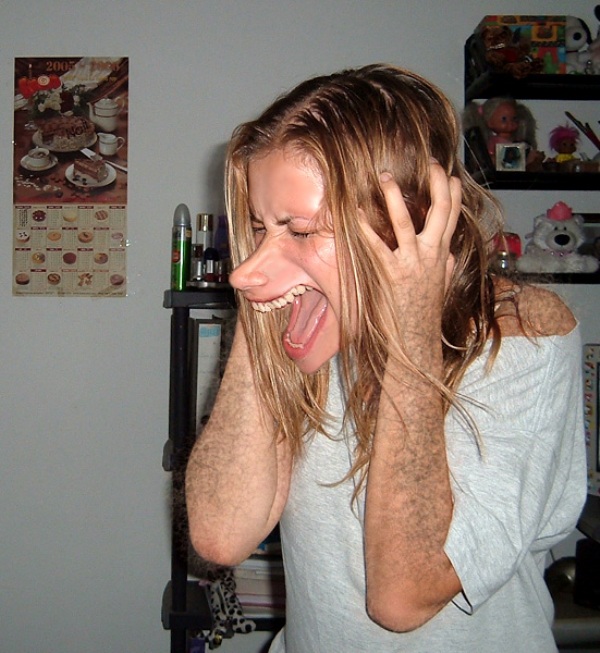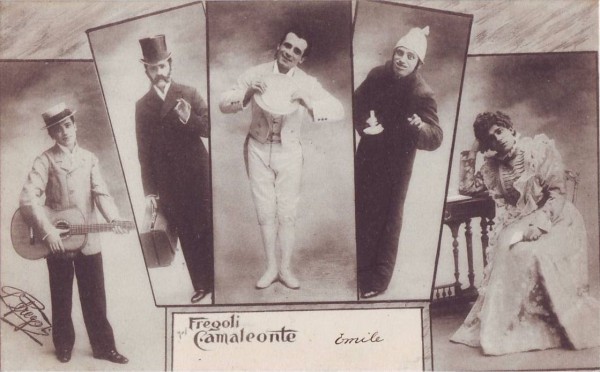Mind manifests itself subjectively as a stream of consciousness, which allows individuals to model the world, and so to deal with it effectively according to their goals, plans, ends and desires. This is rightly an amazing thing placed inside our craniums; however it can trick us as a part of its normal phenomena. Any disturbance from this normal function leads to a psychological or behavioral patterns associated with distress or disability that occurs in an individual, which is not a part of normal development or culture. The field of Mental Health has expanded over time, discovering such incredibly strange disorders a normal mind might even fail to believe like that but they exist and here we shall elaborate a ten.
10. Derealization

Image Source
Derealization ( DR ) is an alteration in the perception or experience of the external world so that it seems strange or unreal. Other symptoms include feeling as though one’s environment is lacking in spontaneity, emotional colouring and depth. It is a dissociative symptom of many conditions, such as psychiatric and neurological disorders.
The detachment of realization can be described as an immaterial substance that separates a person from the outside world, such as a sensory fog, a pane of glass, or a veil. Individuals may complain that what they see lacks vividness and emotional colouring.Familiar places may look alien, bizarre, and surreal. The world as perceived by the individual may feel like it is going through a dolly zoom effect . Such perceptual abnormalities may also extend to the senses of hearing, taste, and smell.
9. Autophagia
Image Source
As a mental disorder/symptom, Autophagia is a case in which one is compelled to inflict pain upon oneself by biting and/or devouring portions of one’s body. It is sometimes caused by severe sexual anxiety, sometimes combined with schizophrenia or psychosis
8. Synaesthesia

Image Source
Synaesthesia is a neurologically-based condition in which stimulation of one sensory or cognitive pathway leads to automatic, involuntary experiences in a second sensory or cognitive pathway.
The sensory links are intermixed. When a person senses something, automatically, another sensation lights up. For example patients see letters in different colors, some might see music, or taste words, days of the week have personalities, and some experience to see time, etc The picture above depicts of a synesthete being able to taste color.
7. Amputee Identity Disorder
Image Source
Amputee Identity Disorder , refers to a neurological and psychological mental disorder implying a psychological feeling that one would be happier living life as an amputee and is usually, if not always, accompanied by the desire to amputate one or more healthy limbs in order to enact that desire.
It may or may not be characterized by a sexual motivation for being or looking like an amputee which is called apotemnophilia . In addition, acrotomophilia , which describes a person who is sexually attracted to other people who are already missing limbs, may rarely be present too. These may represent as separate disorders but there does seem to be some relationship between them because most individuals exhibiting them in common.
6. Shopaholism

Image Source
Oniomania is the technical term for shopaholism, the compulsive desire to shop. The addicted person gets into a vicious circle that consists of negative emotions like anger and stress, which lead to purchasing something. After the buying is over, the person is either regretful or depressed. In order to cope with the feelings, the addicted person resorts to another purchase.
Sufferers often experience the highs and lows associated with addiction.Victims often experience moods of satisfaction when they are in the process of purchasing, which seems to give their life meaning while letting them forget about their sorrows. Once leaving the environment where the purchasing occurred, the feeling of a personal reward has already gone. To compensate, the addicted person goes shopping again.Eventually a feeling of suppression will overcome the person. For example, that the bought goods will be hidden or destroyed, because the person concerned feels ashamed of their addiction and tries to conceal it.
5. Walking Corpse Syndrome

Image Source
Walking Corpse or Cotard’s Syndrome, also known as nihilistic or negation delusion , is a rare neuropsychiatric disorder in which people hold a delusional belief that they are dead (either figuratively or literally), do not exist, are putrefying, or have lost their blood or internal organs. Rarely, it can include delusions of immortality.Despair and self-loathing characterize a mild state. Someone suffering the severe state begins to deny the very existence of the self.
Young and Leafhead describe a modern-day case in a patient who suffered brain injury after a motorcycle accident:
The patient’s symptoms occurred in the context of more general feelings of unreality and being dead. In January, 1990, after his discharge from hospital in Edinburgh, his mother took him to South Africa. He was convinced that he had been taken to hell (which was confirmed by the heat), and that he had died of septicaemia (which had been a risk early in his recovery), or perhaps from AIDS (he had read a story in The Scotsman about someone with AIDS who died from septicaemia), or from an overdose of a yellow fever injection. He thought he had “borrowed my mother’s spirit to show me round hell”, and that he was asleep in Scotland.
4. Alice in The Wonderland Syndrome (AIWS) Or Todd’s Syndrome:

Image Source
Alice in Wonderland syndrome, also known as Todd’s syndrome, is a disorienting neurological condition which affects human perception. Sufferers may experience micropsia, macropsia (described below) and size distortion of other sensory modalities. A temporary condition, it is often associated with migraines, brain tumors, and the use of psychoactive drugs
Micropsia is a neurological condition affecting human visual perception in which humans, inanimate and animate objects are perceived to be substantially smaller than they actually are. Micropsia can be caused by either optical distortion of images in the eye (as by glasses or certain ocular conditions) or by a neurological dysfunction. Similarly macropsia is the reverse condition characterized by objects appearing substantially larger than they actually are e.g a car may seem as big as a mountain.
3. Clinical Lycanthropy

Image Source
Clinical lycanthropy is defined as a rare psychiatric syndrome that involves a delusion that the affected person can or has transformed into an animal or that he or she is an animal. Its name is connected to the mythical condition of lycanthropy, a supernatural affliction in which people are said to physically shapeshift into wolves. The terms zoanthropy and therianthropy are also sometimes used for the delusion that one has turned into an animal in general and not specifically a wolf.
Affected individuals report a delusional belief that they are in the process of transforming into an animal or have already transformed into an animal. It has been linked with the altered states of mind that accompany psychosis (the reality-bending mental state that typically involves delusions and hallucinations) with the transformation only seeming to happen in the mind and behavior of the affected person. The patient reports in a moment of lucidity or looking back that he sometimes feels as an animal or has felt like one and behaves in a manner that resembles animal behavior, for example crying, grumbling, or creeping.
2. Delusional Misidentification Syndrome

Image Source
Delusional misidentification syndrome is an umbrella term, for a group of delusional disorders that all involve a belief that the identity of a person, object or place has somehow changed or has been altered.
This syndrome is usually considered to include four main variants:
- The Capgras delusion is the belief that (usually) a close relative or spouse has been replaced by an identical-looking impostor.
- The Fregoli delusion is the belief that various people the believer meets are actually the same person in disguise.
- Intermetamorphosis is the belief that people in the environment swap identities with each other whilst maintaining the same appearance.
- Subjective doubles , in which a person believes there is a doppelgänger or double of him or herself carrying out independent actions.
1. Hemispatial Neglect
 Image Source
Image Source
Hemispatial neglect , is a neuropsychological condition in which, after damage to one hemisphere of the brain, a deficit in attention to and awareness of one side of space is observed. Hemispatial neglect is very commonly on the opposite side of the damaged hemisphere, but instances of same sided neglect have been reported.
Although most strikingly affecting visual perception (‘visual neglect’), neglect in other forms of perception can also be found, either alone, or in combination with visual neglect. A patient with neglect behaves as if one side of sensory space is nonexistent; although they can still walk and turn around to either sides. A patient with neglect might fail to eat the food on the one half of their plate, even though they complain of being hungry. If someone with neglect is asked to draw a clock, their drawing might show only the numbers 12 and 1 to 6, the other side being distorted or left blank. Neglect patients may also ignore one side of their body, shaving or adding make-up only to the non-neglected side.